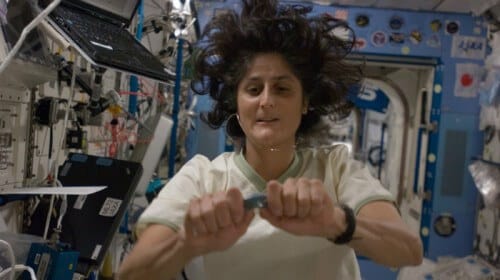The private spacecraft "Cygnus" (of the "Orbital" company) that arrived this week at the International Space Station, brought with it into space six experiments that were designed and built by high school students from Israel.

The private spacecraft "Cygnus" (of the "Orbital" company) that arrived this week at the International Space Station, brought with it into space six experiments that were designed and built by high school students from Israel.
In an experiment planned by the students of Ort K. Tevaon, the decay processes of an apple under the conditions of zero gravity will be examined, and if they are different from the processes on Earth.
An experiment by BIS Darka from Bat Yam will test how "Artemia" crustaceans grow in zero gravity; Atidim high school students from Holon will examine the rusting processes of metals in space; Ben Shemen High School students will examine growth processes and the culture of yeast; Nachshon High School students in Shoham will examine Styrofoam recycling processes; And the students of Midrash Sde-Bokar will examine the growth processes of the coscotta, and try to see if the absence of gravity affects the way the climbing plant grows. Each such experiment was designed so that the staff members at the station could operate it without effort and without investing a lot of time in it, and in a way that the experiment in space does not require much maintenance. At the same time as being active in space, the student groups run control experiments on the surface of the Earth.
When the experiments return from space, in a few weeks, the students will be able to compare what happened on the surface of the earth with the processes that took place at an altitude of about 400 km, and see how the absence of gravity affected the various processes. The experiments are led by the NSL company, in cooperation with the "Spacelab" program of the Ramon Foundation, and through an American company that handles the procedures for launching the experiments into space. "Space is only a secondary tool," says the CEO of NSL, Dr. Raz Itzhaki Tamir. "The important thing here is the study and research process that the students go through from the first stage of planning the experiment to the execution, and it is a process that gives them great empowerment."
In the last two years, four experiments by high school students from Israel have already been launched into space, and just last month the students of the "Science Center" high school in Herzliya made history, when they launched the first (and second ever) Israeli student satellite into space. These successes place Israel at the top of the countries that operate space experiments, and lay the foundations for nurturing future generations of scientists.

One response
Great use of the space station - education. Unfortunately (seriously) there are no other serious uses.